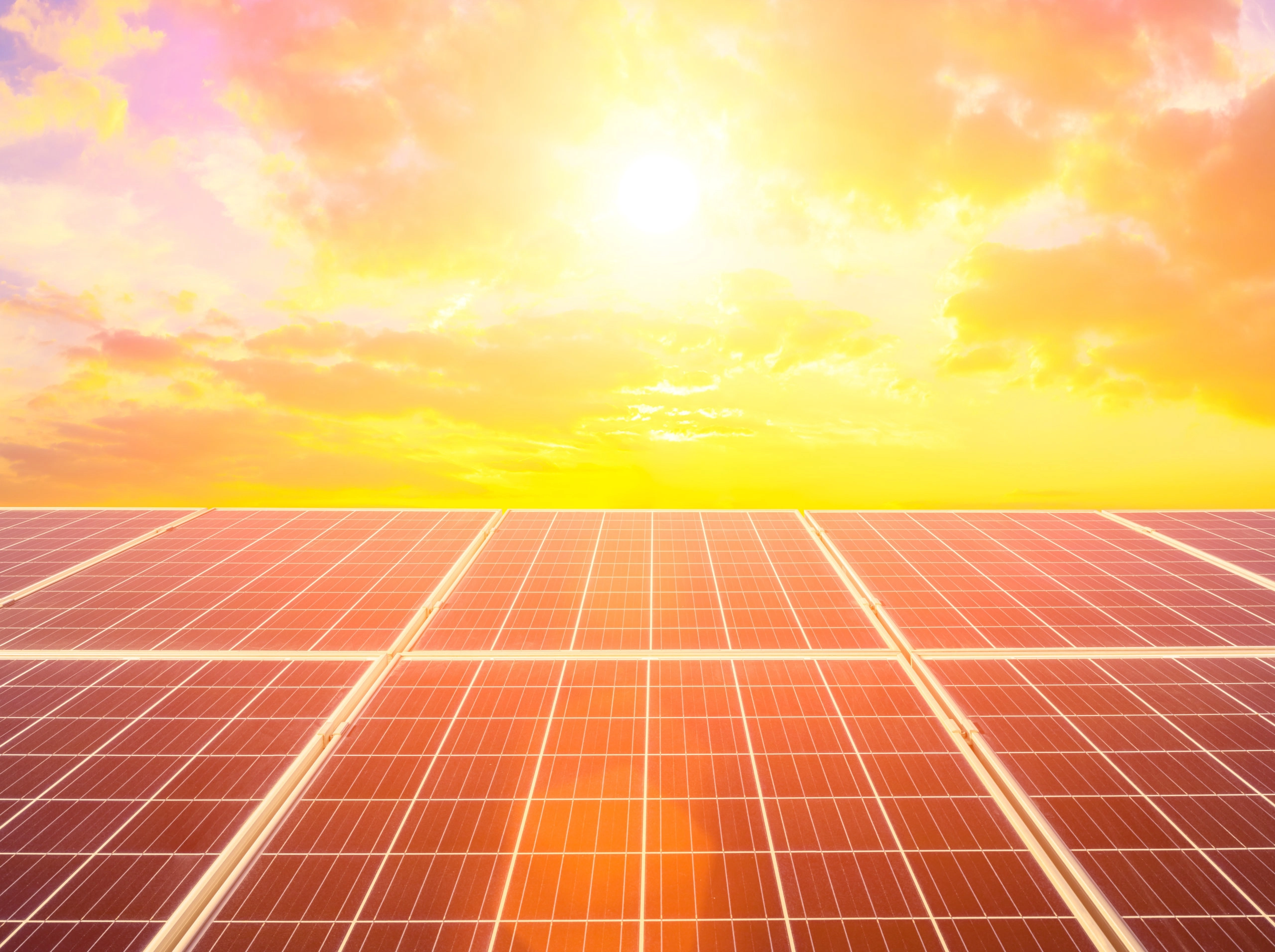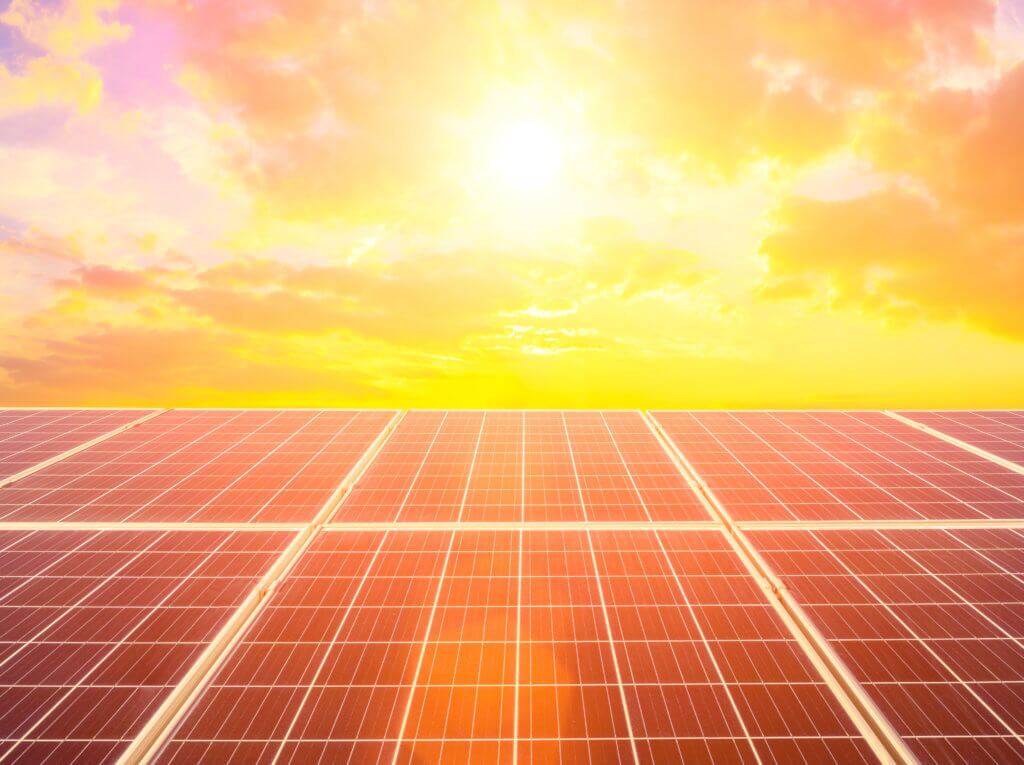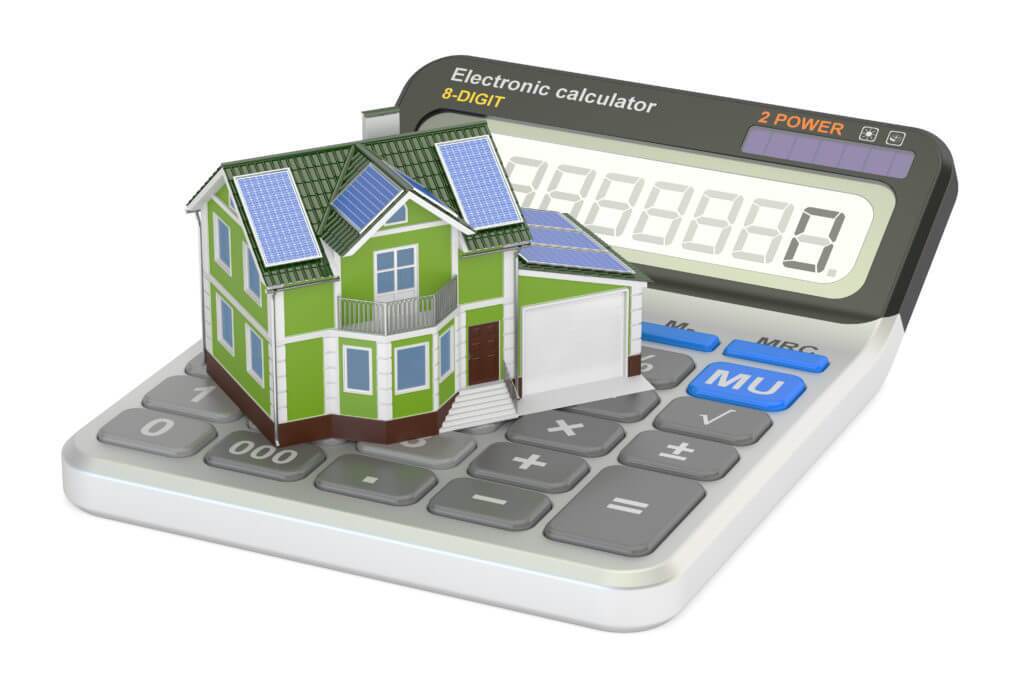

According to ConsumerAffairs, the average price of solar panels hovers around $12,000. Low ranges could be around $5,000 and some systems may run as high as $40,000. That puts the price of solar panels in the same range as a vehicle purchase, which means it better be a worthwhile investment for you and your home for the long-term.
A lot of factors go into determining the final price of solar panels for your home in particular, so let’s start with the surface-level costs.
Starting Costs and Lifetime Repairs
The price of solar panels, on paper, includes 3 things:
- Labor
- Hardware
- Maintenance
The labor of installation and the time we spend helping you arrange/file permits for your local government is a one-off cost when we set up your system.
Hardware comes down to a system of layered panels made up of photovoltaic cells that is sturdy enough to withstand hail.
And with that straightforward design and sturdiness, maintenance is a matter of cleaning dirty panels or replacing failed cells in the case of major damage from outside sources.
A solar panel system should last you between 15-30 years, generating your own electricity long after that initial investment is behind you (depending on your financing plan). The important thing to know is that there are a lot of ways to offset these surface-level costs—which leads us to the kind of money you can save at installation and throughout the life of your solar system.
The Price of Solar Panel Power Production
One of the most flexible aspects of a solar panel system is the number of panels it includes. Whether you want to bring down your usual monthly spending or completely offset your usual power bill, the price of your solar panels has the potential of saving you money elsewhere.
As the U.S. Energy Information Administration reports, the average cost of residential electricity hovered around $115/month in 2019 nationwide. From the very beginning, we’ll help you smooth out your monthly payment by establishing a financing plan where you pay a flat price that could undercut or negate your average monthly electricity bill.
Depending on your power output and where you live, you may even be able to sell your excess power back to your power company for cash or other credits.
The unseen savings of your steady power output—combined with a fixed, monthly price—is how you’ll avoid unexpected price hikes. Electricity bills have grown in average price by more than 60% in the last 20 years. When you invest in solar power today, your monthly power savings might increase by the same amount over the next 20 years, assuming the trend continues. Given how technology continues to become more and more accessible, it’s hard to conclude that utility companies will lower the price of power.
The savings that comes from this unchanging monthly payment depends on one thing though: your purchasing plan.
Leasing vs. PPA vs. Buying to Own
There are lots of purchasing options when getting solar installed, but they’re not all created equal. Some provide a lower barrier of entry but keep a lot of the savings for themselves.
For example, when a company offers to lease you a system you’ll be paying a monthly rental fee on their equipment in exchange for the power that equipment generates. But you don’t own the hardware itself. Depending on your contract with those companies, you might see price fluctuations that trend upward—right along with the utility companies—which makes it easy to wonder what you’ve gained.
Other companies may offer a Power Purchasing Agreement or PPA, which is similar to a leasing arrangement. They install their hardware, and then you purchase power from them as if they were your utility company. The selling point here is that the price of your power might be less than the local utility company’s rates.
These leasing options also bring a number of unfortunate complications when considering the value of your house if you want to appraise or sell. The solar panel system is mounted on your property, even though you don’t own it. So in order to sell your house, you’ll have to consider one of three options on top of all the usual real estate stress:
- Sell your house AND the contract
- Buy out your contract and the hardware with the potential profit from the house sale (which means you’re eating into your home sale profits!)
- Break your contract and have them uninstall the hardware
None of these solutions are easy, and they may impact your success in selling your house to new buyers.
The bottom line is that both of these purchase options keep you from owning the hardware that’s generating electricity on your own property. You still pay for your power by the month, that payment may fluctuate with the power market, and the company loaning you their solar system gets to benefit from all the tax breaks and incentives offered by state and federal governments.
In contrast, buying to own your hardware comes with a long-term purchasing plan that not only puts that monthly payment toward the equity of your house, but it also lets you benefit from the number of alternate savings.
The Price of Solar Panels After Tax Incentives
Beginning in 2022, you can receive a credit of 30% on your federal taxes for going solar. This credit was increased from 26% and extended for the next 10 years.
Combine those savings with your particular state’s tax credit and you may be able to claim even more. Some states offer incentives similar to the federal government’s, but whether it’s a flat value or a percentage of the price of your solar panels depends on the state. Others have different tax incentives based on other factors.
The best thing is you can get both. Federal and state tax incentives do not zero each other out. But if you aren’t buying to own, then the company owns your solar system gets them instead.
Our consulting team and contractors are happy to walk you through exactly what you need to save as much money as possible with all the available tax savings.

External Considerations: Your Environment’s Effects on Your Solar System
When we look at averages for monthly electricity costs and the average prices for solar panels, it’s important to remember that none of these averages take into account your particular location. Some states see more days with sun per year than others depending on the kind of weather that frequents their geographical regions.
For example, Colorado is one of the sunniest states in the U.S., but it can also see snowstorms that leave solar panels covered for a number of days during the year. Other states are further north, which may also affect the degree of solar input.
Your location and weather can impact the size and price of your solar system required to meet your power needs. Combine that with how the layout of your roof might affect how many south-facing eaves panels can be mounted on (south is the most optimal angle for steady sunlight in the Northern hemisphere), and you can see just how much nuance there is to estimating the price of solar panels.
All of these factors are important to consider, and with all of them considered there’s a good chance solar panels can fit your budget and needs. A solar system in Washington powers a home the exact same way as a solar system in Texas. These details just affect your unique customer quote, which you can access from our free estimate page.
The Blue Raven Promise Regarding the Price of Your Solar Panels
After you fill out the basic contact form, a representative will reach out with a few questions. We’ll get a bead on your location and your current energy usage to determine exactly how solar will save you money. We’ll provide you with that report at no cost to you.
And as a promise to you, after this free, zero-commitment savings report, if it turns out your savings don’t sufficiently justify your investment, we’ll let you know. We understand that investing in your new solar system is a long-term relationship and we’re committed to making sure you’re satisfied every step of the way.
Once we have an accurate proposal with the price of your solar panels and you’re ready to invest in a buy-to-own purchasing plan, we can help you with a number of other saving strategies and guarantees.
We don’t aim to pressure any homeowner who’s on the fence about this investment. We believe that our no-pressure approach and competitive solar promotion builds trust and allows homeowners to make a clear decision they’ll be happy with for years to come.
We provide you savings and guarantees on the price of your solar panels in a number of ways. First, we offer a $0 up-front plan for design, permitting, and installation costs—plus 18 months worry free (we cover your loan payments).
Our Blue Raven product guarantee includes another way of making sure you get the power you need. If any of our solar energy systems produce less than 50% of original estimates over any three-month period or less than 85% of original estimates over an 18-month period, we’ll upgrade the system with more panels free of charge. With our solar panel monitoring app, you can see for yourself whether your investment in solar is producing what you’ve paid for.
And with our 25-year manufacturer warranty you’re covered for any repairs or panel replacements needed from first-day installation all the way into decades of satisfied use.
Estimating the price of a solar system isn’t the easiest thing to do, but we want it to be the easiest thing for you to do. Our contractors will be with you every step of the way through the installation and any jurisdictional filing to get you started.
What Is the Actual Price of Solar Panels, Then?
Just like we mentioned before, it’s complicated. The price of solar panels revolves around the number of panels required for a certain amount of power generated over your years of ownership with estimations of average sunlight.
So let’s break it down with a pretty basic example. First, the numbers:
- For this example, let’s assume the system is $15,000 and is installed in Utah.
- Qualified federal tax incentives, at 22% in 2021, provide tax benefits valued at $3,300
- Utah tax incentives for solar panels installed in 2021 come out to 25% of the price of your solar panels or $1,200, whichever is lower. So tax benefits for this solar system come in at $1,200.
- Let’s assume a 20-year payment plan: $15,000, 20 years, 240 months. That plan comes to a price of right around $62.50/month.
- Compared to Utah’s average power bill of $76, and that monthly payment is a savings of $12.50 per month. Saving $13.50 per month, for 240 months, equals another $3,240 over that financing plan.
For the easy example, let’s completely ignore how power prices have risen consistently over the last 20 years. The combined savings of all those tax incentives, and how much money saved in monthly electricity bills, rolls out to $7,740. That’s over 50% of the system’s cost in those savings alone!

The Price of Solar Panels with the Right Partner
When you partner with Blue Raven Solar, you are choosing to make an investment in your property and your overall impact on the environment with a green energy production choice. We’ll help you estimate the price of your solar panels, help you navigate the permit process, get them installed, and help you start generating power today.
You swap your fluctuating, ever-increasing power bill for a flat, reliable monthly payment. That monthly payment goes to your home equity rather than a utility company. When you finish paying down the price of your solar panels, that monthly payment goes away and your power output continues on.
Your solar system has a price, and we can help you find it. But the investment and opportunity you access by opting for solar power is priceless. Contact us today to see if solar powered energy is right for you.



Sorry, the comment form is closed at this time.